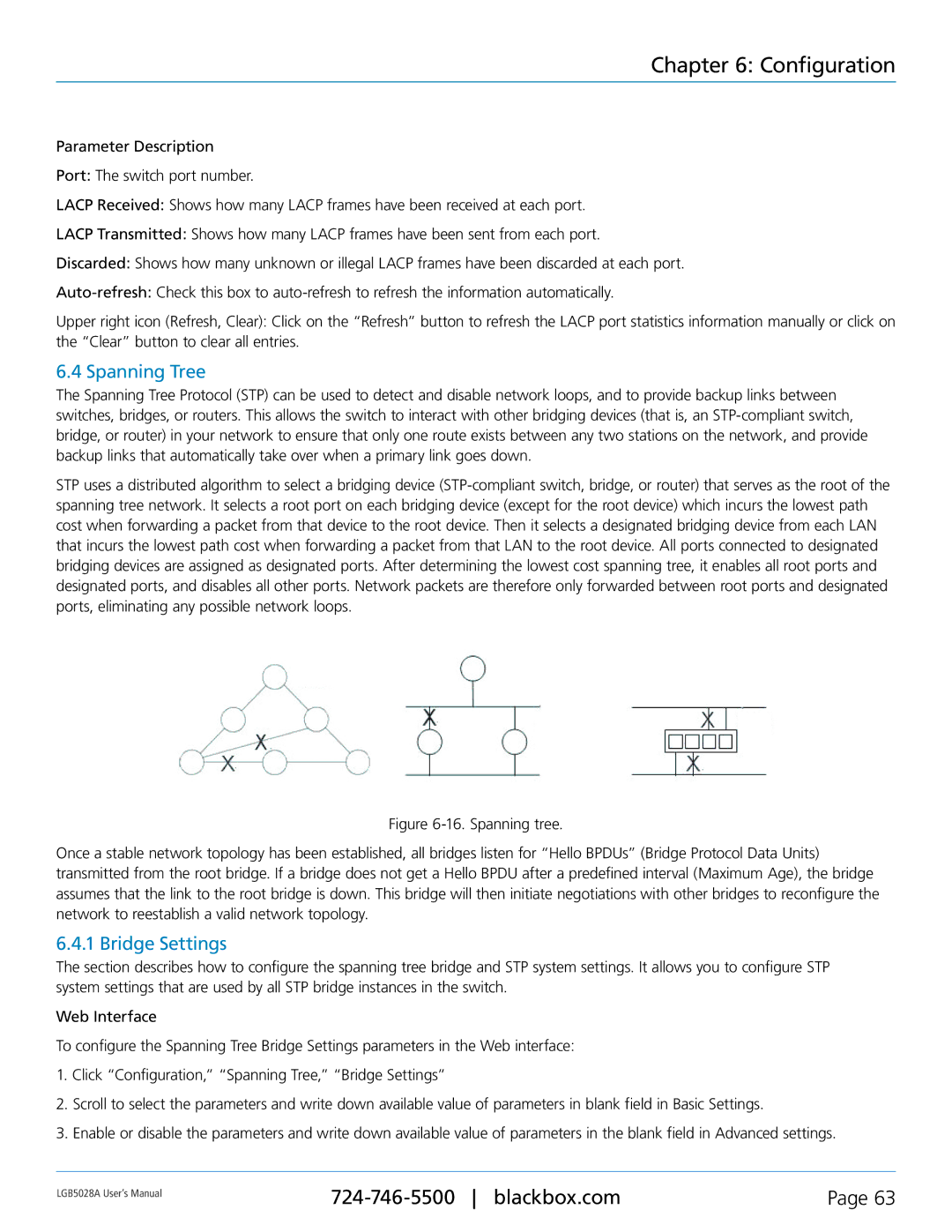
Chapter 6: Configuration
Parameter Description
Port: The switch port number.
LACP Received: Shows how many LACP frames have been received at each port.
LACP Transmitted: Shows how many LACP frames have been sent from each port.
Discarded: Shows how many unknown or illegal LACP frames have been discarded at each port.
Upper right icon (Refresh, Clear): Click on the “Refresh” button to refresh the LACP port statistics information manually or click on the “Clear” button to clear all entries.
6.4 Spanning Tree
The Spanning Tree Protocol (STP) can be used to detect and disable network loops, and to provide backup links between switches, bridges, or routers. This allows the switch to interact with other bridging devices (that is, an
STP uses a distributed algorithm to select a bridging device
Figure 6-16. Spanning tree.
Once a stable network topology has been established, all bridges listen for “Hello BPDUs” (Bridge Protocol Data Units) transmitted from the root bridge. If a bridge does not get a Hello BPDU after a predefined interval (Maximum Age), the bridge assumes that the link to the root bridge is down. This bridge will then initiate negotiations with other bridges to reconfigure the network to reestablish a valid network topology.
6.4.1 Bridge Settings
The section describes how to configure the spanning tree bridge and STP system settings. It allows you to configure STP system settings that are used by all STP bridge instances in the switch.
Web Interface
To configure the Spanning Tree Bridge Settings parameters in the Web interface:
1.Click “Configuration,” “Spanning Tree,” “Bridge Settings”
2.Scroll to select the parameters and write down available value of parameters in blank field in Basic Settings.
3.Enable or disable the parameters and write down available value of parameters in the blank field in Advanced settings.
LGB5028A User‘s Manual | Page 63 | |
|
|
